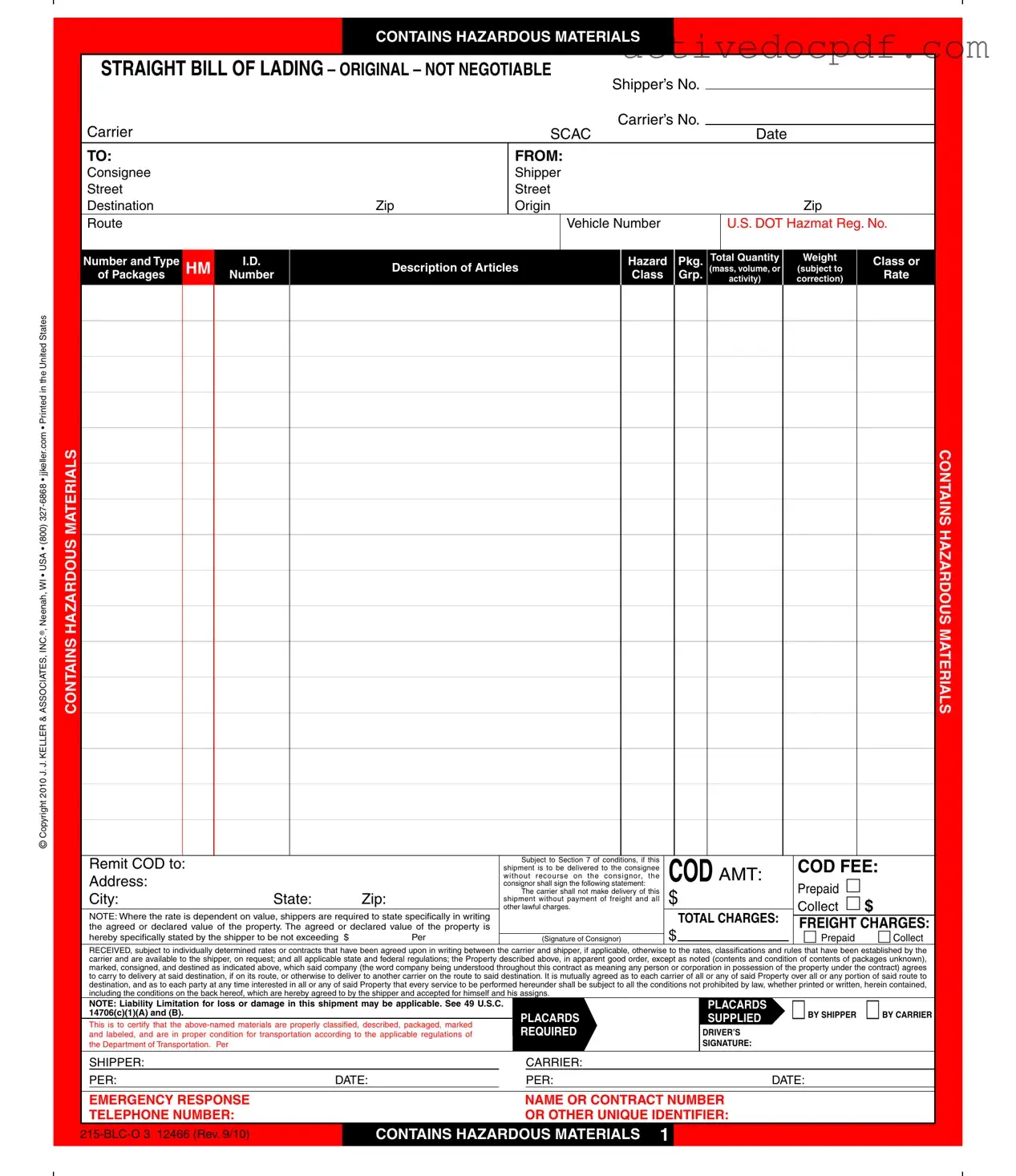The Hazard Bill of Lading form is a legal document used in the transportation of hazardous materials. It serves as a contract between the shipper and the carrier, detailing the specifics of the shipment, including the type of hazardous materials being transported, their classification, and the responsibilities of both parties. This form is crucial for ensuring compliance with federal and state regulations regarding the safe handling and transportation of hazardous goods.
Why is it important to declare hazardous materials?
Declaring hazardous materials is essential for several reasons:
-
Safety:
Proper declaration helps ensure that the carrier and any handling personnel are aware of the potential risks associated with the materials, allowing them to take necessary precautions.
-
Legal Compliance:
Regulations require that hazardous materials be accurately identified and documented to prevent legal repercussions for both the shipper and the carrier.
-
Liability Protection:
By declaring hazardous materials, shippers can limit their liability in case of accidents or damage during transport, as they have fulfilled their obligation to inform the carrier.
Failure to use the Hazard Bill of Lading form can lead to significant consequences. Without this documentation, carriers may refuse to transport the goods, resulting in delays and additional costs. Moreover, shippers may face legal penalties for non-compliance with hazardous materials regulations. In the event of an accident or incident involving the hazardous materials, the absence of proper documentation can complicate liability issues, potentially exposing the shipper to greater financial risk.
Filling out the Hazard Bill of Lading form requires careful attention to detail. Here are the key steps:
-
Identify the Parties:
Clearly state the names and addresses of both the shipper and the consignee.
-
Describe the Hazardous Materials:
Provide a detailed description of the materials, including their classification and any relevant identification numbers.
-
Specify the Quantity and Weight:
Accurately indicate the total quantity and weight of the hazardous materials being shipped.
-
Sign and Date:
Ensure that the shipper signs and dates the form, acknowledging the terms and conditions outlined.
Double-check all entries for accuracy to avoid potential issues during transport.
What should I do if there is a problem with my shipment?
If a problem arises with your shipment, such as loss or damage, it is important to act quickly. First, review the terms outlined in the Hazard Bill of Lading form, as they detail the procedures for filing claims. Claims must typically be submitted in writing to the carrier within nine months of delivery. Gather all relevant documentation, including the bill of lading, and provide a clear description of the issue. Contact the carrier directly to discuss the situation and initiate the claims process. Prompt action can help resolve the issue more efficiently.
